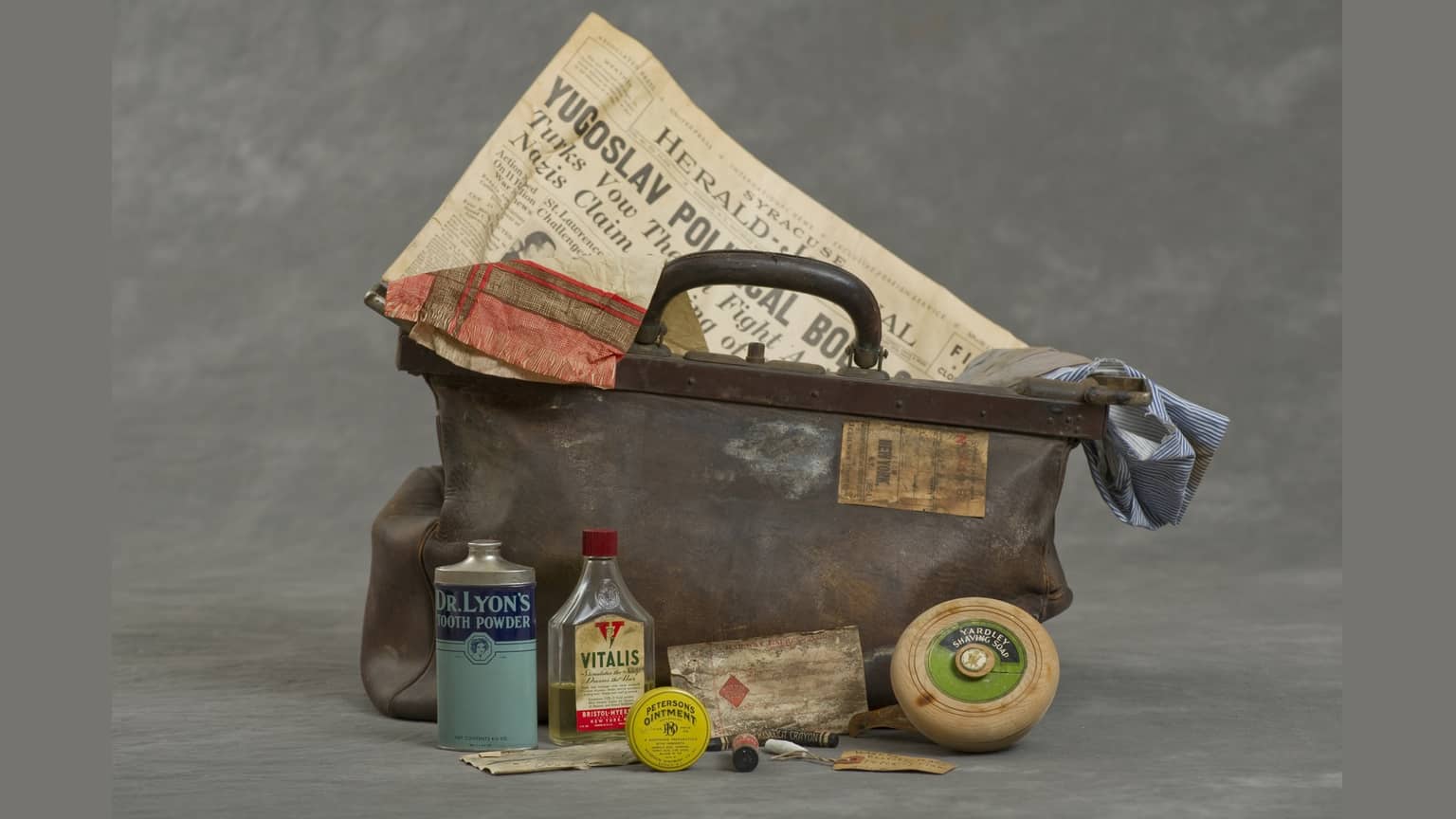The Willard Asylum Suitcase Collection has 400 suitcases containing the possessions of patients housed in the NY psychiatric facility between 1910 and 1960. Faced with chronic mental illness, many packed their suitcases to go to the asylum and never left until they were buried across the road.
This fascinating collection is being documented in painstaking detail by photographer Jon Crispin. Toronto director Rosanna Saracino was so profoundly affected by these suitcases – and the people whose lives they represent – that she has made them the subject of her new show, Suitcases, coming November 1st-5th.
SDTC: What can we learn about these people’s lives from the scant items in their suitcases?
RS: One of the fascinating experiences of the objects is just how diverse they are, ranging from mundane (hair brushes, etc.) to the unusual (musical instruments). We have no way of knowing if these patients packed these items themselves, but I believe it provides insight into an inner identity – a sense of their most basic needs, their faith, their conflicts. The challenge is recognizing that only a fraction of an identity can be glimpsed at, but we strive to uncover in this production that which most deeply connects us: fears, dreams, family, love, belonging, and hope. Further to this, I believe we can learn to recognize how simple these needs are, and that despite our set-backs, challenges, traumas, and diagnoses, we are fundamentally human and joined.
One of the suitcases belonged to a wealthy woman and was filled with precious perfumes, silk beaded shoes and furs. I have a passion for vintage and for the past, so the beauty of these items inspired me. This is largely because my fashion for vintage items and clothing always stemmed from a deep curiosity about who those people were – and the more glamorous the item, the more wonder I felt, as this was so removed from my own life experience. But, in working on this piece, I came to truly understand that the dressing is just that, and beneath it, we are equal, vulnerable, predisposed to our own monsters, and all of us, in some way, are haunted and seeking to free ourselves from the secrets that bind us.
What was the most upsetting part about this subject?
On a personal note, my research into asylums led to significant discoveries about the treatment of women during that period. Many women were kept shackled, naked, and were rarely fed. When some of these women arrived at institutions such as Willard, they showed signs of multiples births or suggested they had been repeatedly raped/impregnated during their stay in other asylums. The idea of such rampant abuses of ailing women, and the subsequent understanding that this “healing” process had likely corrupted them further, was difficult to accept. Also, I had strong reactions to the reasons why some people were placed in asylums: homosexuality, post-partum depression for longer than three months, husbands seeking to rid themselves of their wives but unable to divorce, etc. Power to lock up “the undesirables” seems to have been rampant during the late 19th and early 20th century, and I can only imagine how many women and men were locked up due to social factors instead of psychological conditions.
How did Suitcases come about?
The initial workshop at Canadian Stage began simply: present the actors and dancers with the images of the suitcases, have them select one or two that resonated with them, and from there, a character would be created. We did not want to create a documentary piece about Willard, but wanted instead to investigate themes of “madness,” isolation, and social perceptions of the “other.” Working with my choreographer, we developed a series of physical phrases based on these themes. Text was created, and inspired by existing texts pulled from the period, to create a fully devised piece.
Also, I invited guest writers to contribute “showcase” pieces, which were then folded into the overall text. Themes have been elaborated, and full scenes are being devised and created. I am using a range of devised techniques, and creating exercises to help to generate text, character, movement and world of the play.
What do you want us to take away from the performance?
I am hoping that audiences will recognize themselves, perhaps confronting some of their preconceptions, and ideally, to challenge the social stigmas around psychological and emotional dysfunctions. In rehearsal, we discovered that even in the isolation of madness or institutionalization, there is always community. We are a tribe, broader than the social cues and boundaries we apply to diminish that fact.
See Suitcases November 1-5 at Artscape Sandbox. See additional info here.



 Follow Us On Instagram
Follow Us On Instagram
